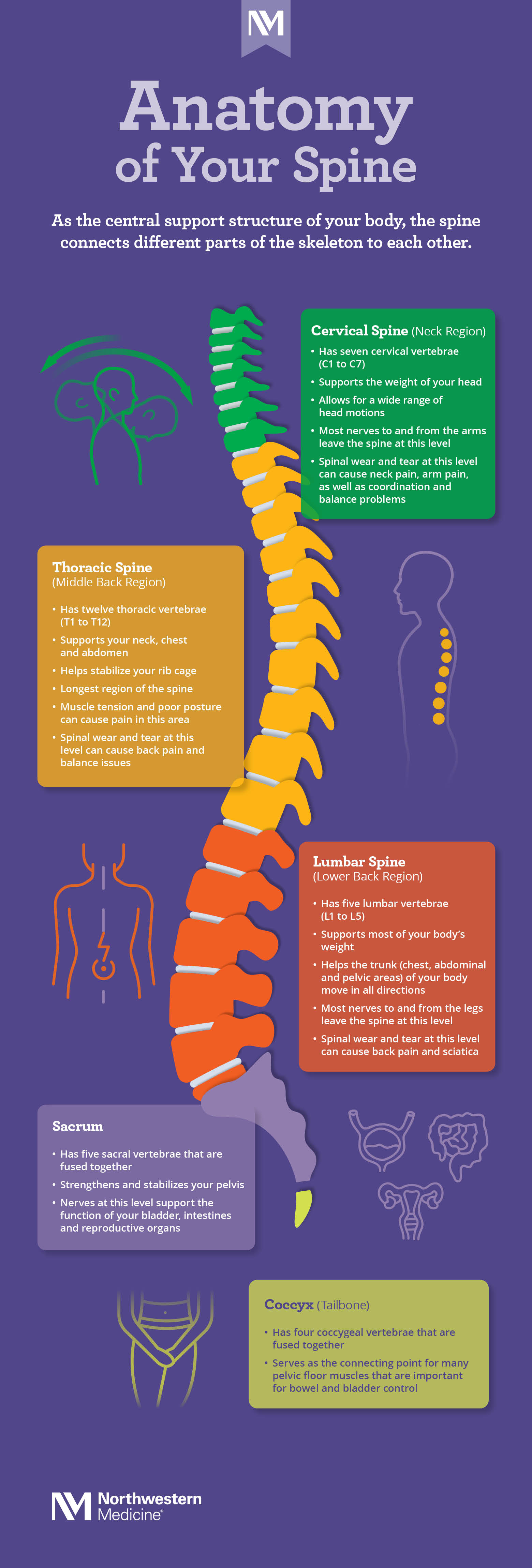Map of Your Spine [Infographic]
Your Backbone Provides Structure and Function
Published October 2022
Have you ever stopped to wonder what connects your entire body? It's your spine. As the central support structure of your body, the spine connects different parts of the skeleton to each other, including your:
- Head
- Shoulders and arms
- Chest
- Pelvis and legs
The spine is complex. It supports two main functions within the body.— Najib El Tecle, MD
"The spine is complex. It supports two main functions within the body," says Najib El Tecle, MD, a neurosurgeon at Northwestern Medicine. "By supporting the weight of your head and upper body your spine helps you maintain an upright posture and gives you the freedom to walk and run, your spine also protects your spinal cord and spinal nerves which carry nerve signals between your brain and your body."
Adults typically have 33 bones called vertebrae, that interlock with each other to form the spinal column. The vertebrae are divided into five regions or sections:
- Cervical
- Thoracic
- Lumbar
- Sacrum
- Coccyx
Each section has a different number of vertebrae and supports different parts of your body.
Strong muscles, bones, flexible tendons and ligaments help your spine stay healthy. However, if they are affected by strain, injury or disease, that can cause pain. "As we get older, like the rest of our body, our spine is going to get older," says Dr. El Tecle. "Therefore, it's important for people to know that you can slow the aging of your spine by maintaining a healthy lifestyle through exercising, maintaining a healthy weight, and smoking avoidance."
To learn more about the anatomy of the spine and how it works, check out the infographic below.








